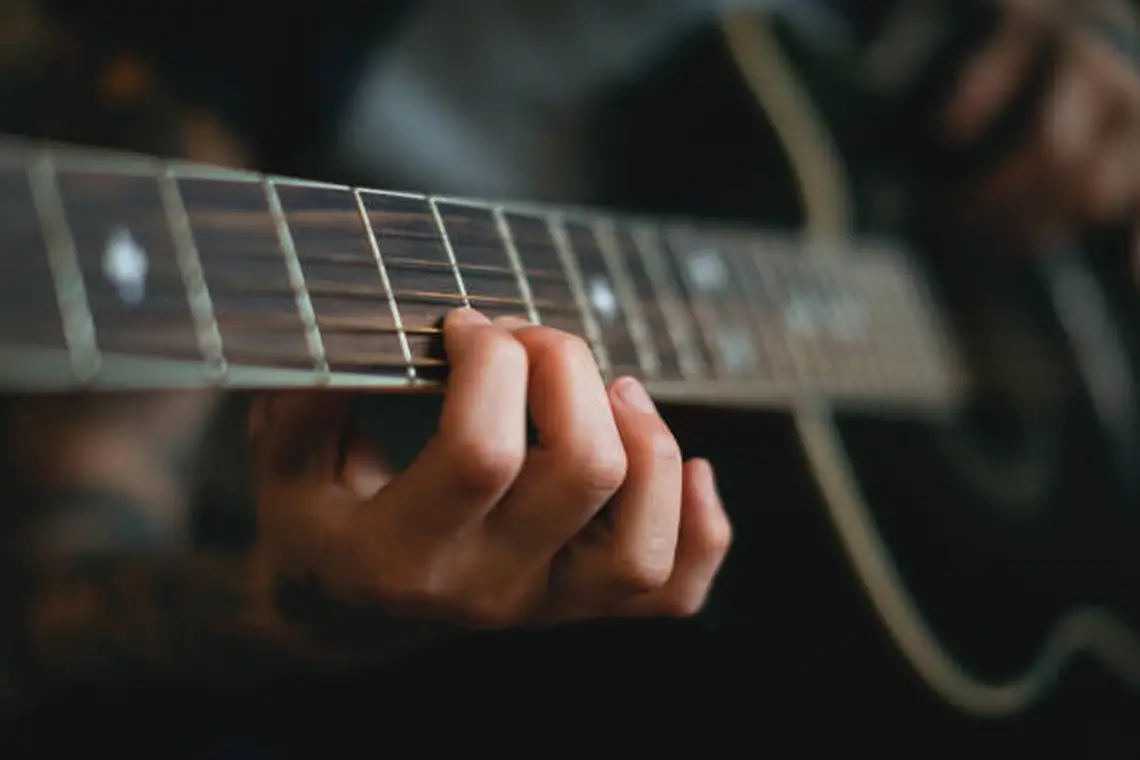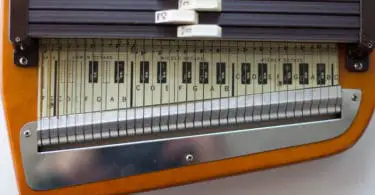I have been playing the guitar for years, but I was one of these beginners that made some mistakes when I purchased my first guitar. The neck of my guitar was too long, which made it more difficult for me to play. Over the years, I have learned from my mistake, so I decided to create a guide for other beginners who are looking to purchase their first guitar so that they can avoid making the same mistakes that so many other guitarists have made. In fact, I even sat down with a few of my buddies who play guitar to help create this list, but before we take a look at it, let’s consider some of the critical features that many beginners look for in a guitar.
You have been taking guitar lessons for the past year, and you have come to love the instrument. Now that you know that it is something that you want to stick with, you have decided to purchase your own guitar. When you walk into a guitar store, you are going to be overwhelmed with the different types of guitars and all of the options that are available to you, and many beginners will end up purchasing the wrong guitar.
What Most Beginners Look for When Purchasing a Guitar
Many beginners choose a guitar because they like the style or the look of a particular brand; in fact, some people will even go as far as purchasing a guitar without playing it at all. This can work, but there is much more to consider. For instance, you will want to consider which type of guitar is best for you, the material that it is crafted from, and how well you can hold the instrument.
One of the first things to remember is that you are going to need more than a guitar to play, so finding a bundle that is sold with the guitar and some important accessories is going to help a beginner stay within their budget more efficiently. Now that you know a little more about what features you will want your first guitar to have, let’s break it down into mistakes that you can make while looking for these features.
Common Mistakes to Avoid
1) Choosing the Wrong Type of Guitar for Your Sound
You can choose from a classical guitar, an acoustic guitar, or an electric guitar. Playing these three types of guitars is different from one another, and many people are told that learning on an acoustic guitar is best, but what if you want to play a lot of alternative or classic rock where you need that electric sound? If you want to play Foo Fighters or Pearl Jam music, you are going to want an electric guitar. If you prefer music from Taylor Swift or Carrie Underwood, an acoustic guitar is going to be more your speed. Classical guitars have nylon strings, so this is an option that is often considered for a child because the strings are more comfortable to press.
That being said, there are several guitars that fall in between these categories; in fact, some models can even be played acoustically or plugged in, so you will need to consider the type of music that you will want to focus on at first. If you decide to venture out from a specific genre, you can always get another guitar that fits that style down the road. Some of the different types to consider include:
- A Solid Body Guitar – This is an option that is going to be great for anyone who is interested in rock or alternative music. It offers a cleaner sound, so it can hit a broader range.
- A Hollow Body Guitar – This is an excellent instrument for anyone who is interested in playing jazz music. This type of guitar will create a little feedback, which helps to create the warm sounds that you hear in blues music as well. You can play this guitar plugged into the amp or unplugged.
- A Semi-Hollow Body Guitar – This is a type of guitar that is great for most genres of music because the feedback that you hear is minimal, but it also creates the smooth, mellow tones that you can get with a hollow body guitar. This guitar can be used plugged into an amp or unplugged as well.
- An Acoustic Folk Guitar – An acoustic guitar with steel strings is going to be an excellent choice for guitarists who want to play country music of soft rock. The steel strings sound great strummed, which is why many acoustic guitar players do not use a pick to play.
- A Classical Guitar – These guitars use nylon strings, which will allow the notes to be sustained for a more extended period of time. They can be used to play classical tunes, but they are also ideal for flamenco music.
2) Choosing a Guitar with Too Many Features
As a beginner, you are only going to want to learn the basics of playing a guitar, which means that you only need a guitar that has the basic features on it. Some guitars have a whammy bar, built-in tuners, and knobs to change the effects of the music that you are creating, but none of these features are essential for your first guitar.
In fact, having too many features is likely to make strumming and learning your fingering more complicated, so it is better to find a guitar without those features. Also, this will help you save money when you purchase your first guitar because many of the features that are designed for high-level guitarists can add quite a few dollars to the price of the guitar.
3) Choosing the Wrong Size Guitar
Not all guitars are designed to be the same size, so if you are a smaller-statured individual, you may have an issue playing a full-size guitar. On the other hand, a taller than average individual will not be able to play a smaller guitar comfortably. In general, electric guitars tend to be a bit smaller than acoustic ones, but they also weigh a bit more because of all of the electric components inside of the instrument. Acoustic models tend to be large and bulky, which can make it difficult for some people to strum. This does not mean that you will have difficulties playing both types, but you will need to consider your arm span and the amount of weight that you can hold while you are playing.
In general, most adults will play on a full-size guitar, but there will be some exceptions. Acoustic models have a small body option that is ideal for smaller teens. There are also 3/4 and ½ size guitars that are designed for kids who are learning to play the instrument. The smallest option available for purchase is a ¼ size guitar, and only classical guitars can be found in this size.
These models are simply scaled down, which makes them ideal for kids, but what about when you cannot reach all of the frets? Well, guitars are designed with different neck shapes and sizes, so make sure that you choose one that is comfortable for you.
The length of the neck is called the scale length, and it varies from guitar to guitar. In fact, the longer the scale length is, the longer the distance between the frets is going to be. With that being said, it is going to be a good idea to hold a guitar before you purchase it to see if you can reach the nut without straining.
If you are having difficulty wrapping your fingers around the neck of the guitar, then the width may be worth considering. A smaller neck will make playing certain chords much more comfortable, but if you can reach all of the strings without an issue to form chords, then a wider neck will make it easier to play with your fingers because the strings will be farther apart. If you still cannot find a guitar with a neck that fits your hands, try looking for a model that has a different neck shape. Most people will prefer a C-shaped neck, but some will find a V-shaped neck or a U-shaped neck more comfortable to play.
4) Choosing a Guitar Based on Brand
Of course, some brands are going to have better guitars than other brands, but you are a beginner, so do you really need all of the bells and whistles that these high-end brands offer on their guitars? Simply put, you are going to want to look into different brands than professional guitarists at this point in your music career because the well-known brands tend to cost a lot more. If they are sold at a lower price point, it is quite likely that they were crafted using lower quality materials to appeal to new guitarists.
When you have played guitar for years, you will want to look at brands such as Gibson, Fender, or Ibanez, but as a beginner, you will want to consider brands like Taylor, Yamaha, and Alvarez. You can purchase a more prominent name brand, but it will be in your best interest to bring a guitarist with you when you are looking at guitars and ask them what they think of the options that you like best. Some lesser known brands will have the quality that you want with a much lower price point.
5) Choosing a Guitar Based on Price
Your budget is always going to be a consideration that you need to make when you purchase a guitar, and guitars tend to have quite a broad range when it comes to price. Some guitars can be purchased for about $100, but if you do decide to purchase one of these models, it is important to remember that the quality of the instrument may show in the price. Cheap guitars can have difficulty staying in tune, and the sound quality may not be where you want it to be.
In general, you will want to consider a guitar that is in the $250 range as a beginner because this will give you a higher quality instrument, just makes sure that you are purchasing it from a dependable seller. If you can afford a guitar that is in the $500 range, you may be able to find a great guitar that you can learn to play on. However, that is as high as you should go as a beginner. Guitars that are over $1,000 are going to be aimed at professional guitarists, which means you will be spending money on features that you are not quite ready to use.
6) Choosing a Guitar with the Wrong Strings
The strings of any guitar are fundamental because the vibration of these strings is what is going to create the music that you hear. If you are not able to move the strings the way that you need to while you are playing, then you may need different strings to perfect your play style. String gauges can range from 0.010 to 0.059.
Lighter gauges are designed to be a bit easier to play because they create less tension on the neck of the guitar. For this reason, lighter gauges are often used on more fragile, vintage guitars. If you play a lot of songs with bends, these lighter strings are going to make bending the string easier, but the volume will not be as loud, and the note will not be able to be sustained for as long. Also, these lighter strings can break more easily, and they can create a buzzing sound on the fret as you play some songs.
Heavier gauge strings are going to be more difficult for a beginner to manage. They tend to take a lot more pressure to press down the strings and bend them, but if you can manage to move these strings as a beginner, you will be able to get more volume and longer sustains out of the notes that you strum.
When you are deciding which string gauge is right for you, you will need to consider the following:
- The Instrument – In general, smaller guitars are going to use lighter gauges, while larger guitars will sound better with heavier gauges. If you want to accent the bass notes that you play, then a heavier gauge will create deep, rich tones, while lighter gauges will emphasize the treble notes, which can allow you to show off some of your strumming techniques as you play.
- Your Play-Style – Do you tend to play with a pick or do you strum the chords with your fingers? If you prefer picking, a heavier gauge will be ideal, but picking will be much easier to manage with lighter gauge strings.
7) Choosing a Guitar with Bad Machine Heads
Machine heads are the key-shaped pegs at the head of any guitar that the strings wrap around to create tension. There are two types of machine heads that you will find on most guitars. The more common type is a basic covered machine head. This is made out of pressed metal, which gives it a vintage look, but it will also slip from time to time and cause the instrument to lose its tuning.
More modern guitars have die-cast machine heads that will maintain their tuning for a much longer period of time. Regardless of the type of machine head that you choose, it is going to be best to make sure that you always tune your guitar before you play.
8) Relying on a Sales Rep to Help You with Your Purchase
If you are thinking of purchasing a guitar at a music store, chances are that you are going to be dealing with a sales rep when you go into the store. While a sales rep may have some great advice when it comes to purchasing a new guitar, their shop may not carry all of the options that are available to you. If they work on commission, they may find you an instrument that benefits their paycheck more than your learning experience.
When it comes to their recommendations, they are always going to go with a guitar that is going to get them a sale. In fact, some sales reps would sooner try to convince you to purchase a guitar that does not fit your style rather than send you to another guitar shop and lose your business.
Instead of relying on someone who works in the music store to find you the best guitar, bring along a guitarist who will not get anything from your purchase. They are likely to tell you whether the instrument fits your needs and whether it is worth spending your time considering.
9) Purchasing a Guitar at a Shop with No Return Policy
Before you go out and purchase an instrument that you cannot return, ask the shop or the dealer where you are thinking of buying a guitar what their return policy is. If they have an open return policy, you can be a little less cautious when you purchase your new guitar because you will be able to return it if you decide that it is not for you. However, many smaller shops will have a restrictive return policy that only gives you a few days to return the guitar, and they may even charge a restocking fee that will cost you more money in the long run than weighing the pros and cons of purchasing the guitar before buying it.
If you happened to purchase the guitar online, you might also need to pay for shipping to get it back to the seller. Some sellers will even tell you that any sale that you make with them is final, which says that they do not care if you are happy with your purchase; they merely want your money. So, the bottom line is: know the return policy of any store or online seller before making a purchase; it will save you a lot of headaches if the instrument turns out to be something that you want to return.
10) Shopping at Discount Stores
Discount stores may sound good for purchasing an instrument, but it is not the most logical choice, especially if you are looking for a quality instrument so that you can truly learn how to play on it. All you will be able to find in one of these stores is a cheap guitar that was designed as more of a toy than an instrument. It will not be made out of quality materials, and it is highly unlikely that the guitar will stay in tune for very long.
This may be a good option for a child because they are going to outgrow their first guitar, but I’d recommend staying away from these types of impulse buys, even if your child really wants a guitar. For a little more money, you will be able to purchase a guitar at a music store that is much higher quality.
11) Shopping at Online Marketplaces
Online marketplaces such as eBay and Craigslist can be a great way to find a quality guitar at a lower price point, but only if you are an expert when it comes to the different types of guitars. This may not be the option that you want to use to purchase your first guitar.
Not all sellers can be trusted on these marketplaces, so if you are not seeing the guitar that you intend on purchasing in person, you may not be able to see the real condition of the guitar until you have already paid for it. If you do decide to purchase a guitar from an online marketplace, make sure that you can return it if you get something that is not quite up to par with what you intended to purchase. The last thing that you want is a damaged guitar that you cannot play. In addition, be aware that this type of marketplace is a place where fake guitars could be sold at a higher price than they are worth, so make sure to inspect images as well.
12) Purchasing a Guitar Without a Warranty
If you ensure that the store that you are purchasing the guitar from has a good return policy, then you may not need a warranty to cover your new instrument. At the same time, if you can find a guitar that has a good warranty, it may be beneficial to take advantage of it, especially if it covers things that are not typically covered by a guitar warranty like scratches in the finish, issues with the neck of the guitar, or problems with the electronics in an electric model.
In most situations, you are never going to need to use the warranty because many of the issues that you have with the instrument can easily be fixed locally for a little bit of money. Typically, to use the warranty, you are going to need to send the guitar away, and shipping and handling for the instrument are likely to cost more than the repairs. If a local store offers a warranty or an in-house service agreement when you purchase an instrument, they may be worth considering as well because you will be able to bring your guitar in this shop for anything from fixing a broken string to repairing the neck of your instrument.
13) Purchasing a Guitar Without Accessories
When you purchase your first guitar, you are going to need accessories to help you play. Of course, if you decide to strum on an acoustic, you may not need many accessories, but you will still need a few to make having a guitar more convenient. Some of the essential accessories to consider include:
- Picks – If you plan on picking your guitar, you are going to need some picks to use. Picks come in different thicknesses, so if you can find a variety pack, you will be able to find which size is the most comfortable for you.
- An Amp – If you have selected a guitar that can be plugged in, you will need to purchase an amp that you can use as well.
- A Guitar Strap – This is something that you will find very useful, especially if you are not used to holding a guitar for an extended period.
- An Extra Set of Strings – Guitar strings can break without a minute’s notice, so if you are prepared to replace your strings, having an extra set on hand could prove to be useful. In addition, a restringing tool can also help you get up and running again.
- A Tuner – It’s important to make sure that you always have a way to tune your instrument. This is useful for instruments that lose their tuning easily, but you also have to remember that not all songs are played in the same key, so retuning may be needed for specific music selections.
- A Guitar Bag – When you are learning the guitar, it is likely that you will take it with you from time to time, so you will need a bag to help keep it protected.
- A Guitar Stand – When you are at home, it is unreasonable to think that you will keep your guitar in the bag all of the time, so you are going to need to purchase a stand where you can keep it on display.
14) Not Playing a Guitar Before Making a Purchase
Before you purchase new clothes, you try them on, right? Of course you do, and you do this to make sure that you are happy with your purchase before you leave the store. You may be able to return it later, but why leave when the shirt you are going to purchase is too tight. Simply make sure you get the right item before you leave the store.
The same is true with a guitar. How will you know if it is the right guitar for you if you do not try it out? In fact, you should play it more than a few times to really test it out and see what it can do. If you are interested in a few different guitars, choose one song that you like to play and see how it sounds on all of the ones that strike your interest. I know that you are a beginner, and playing in front of people may be nerve-racking, but this is going to be the best way to find out which model is best for you. If there is a sound room, you can take the instruments in there to test them out, but if you have to play in the store, just pretend that no one is there listening to you.
Check to make sure that the body of the guitar is up to par and that there are not any cracks or dents in the surface of the instrument. Also, check to see if it stays in tune after you are playing on it for a while. An instrument that loses its tuning quickly is not going to be worth purchasing. Check the strings to make sure that they are all in good condition, and make sure that you flip any switches on the guitar to make sure that they are not faulty.
Wrapping it Up
Remember, you are purchasing your first guitar, so there is nothing wrong with getting a little assistance from someone who is willing to help you find a great guitar for your needs. Just keep in mind that all sales reps are not looking to help you find the best guitar, they may be pushing a specific guitar just to get the sale. Take this list into consideration as you start the process of finding your first guitar, test it out, and make sure that it is one that accommodates the type of music that you want to play. Your first guitar is going to be something that you always have a connection to because it was the instrument that you learned on, so choose wisely.
Sources
- McCraw, C. (2019, January 10). Personal Interview
- Smith, J. (2019, January 10). Personal Interview
- Emond, T. (2019, January 10). Personal Interview
- 7 Common Mistakes When Buying Your First Guitar. Retrieved from https://www.artistguitars.com.au/buying/7-common-mistakes-when-buying-your-first-guitar/575
- 9 Expert Tips for Buying Your First Guitar. Retrieved from https://www.guitarscratchremover.com/blogs/news/9-top-expert-tips-for-buying-your-first-guitar-and-avoiding-mistakes








I agree with most of your points on this article, however I do have a few differences of opinion on some points.
For example placing a price range on a beginner’s guitar. My point of view is this. In the event that the beginning student decides to stop playing guitar for lack of interest or whatever, you don’t want a lower priced guitar that isn’t going to sell very easily. How many people have that lower priced guitar setting up in the attic? A quality instrument has better resale value and is a more attractive item to sell.
Also if you believe that you get what you pay for, that quality guitar you just bought will play easier and sound better - which will encourage the beginning to want to play more.
I would also encourage anyone starting out to ask a qualified luthier to recommend a good instrument to start out on.
About strings, putting too light a string on a guitar that has had heavier strings on it does change the tension on the neck. If this is done, I’d highly recommend a truss rod adjustment.
Thanks for reading. This comes from my own “school of hard knocks”.